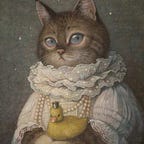Thomas Edison: crafty businessman or scientific genius?
Thomas Alva Edison is a name that almost all of us have heard before. He was the man, to the general public, who single-handedly generated the late 19th century’s most transformative technologies. He was the man, by himself, who lit the night ablaze with the invention of the light bulb. To most, he is almost divine, other-worldly, described to be the best inventor there ever was. But what if I told you that wasn’t true? What if I told you that Thomas Edison isn’t as great a mastermind as you may think?
Edison was known for a lot of things: inventing the phonograph, a record player that uses cylinders, the kinetoscope, an early motion-picture device in which the images were viewed through a peephole, and the most famous invention of them all, the incandescent light bulb. During his 84 years, Edison racked up a total of 1093 official US patents, established the first large scale industrial research institutes, and countless inventions that are the foundations of our modern world.
Edison came from very humble beginnings. He was the youngest of the seven children, born to Samuel and Nancy Edison on February 11, 1847. In his early years, Edison worked as a telegrapher, but as time went on, Edison suffered countless disadvantages due to his deafness.
Then, Edison hit his big break in 1869. At the age of 22, he developed his first invention, an improved stock ticker, which synchronized several stock tickers’ transactions at a time. The Gold and Stock Telegraph Company was impressed, and they paid him $40,000 for the rights to his invention. With this success under his belt, Edison quit his job as a telegrapher to devote himself full-time to inventing. In the next 8 years, Edison developed countless inventions and gained 400 US patents, including the patent for the phonograph, which helped him gain the title, “Wizard of Menlo Park”. Although Edison didn’t come up with this name himself, he must have loved this image.
Edison’s immense success is partially due to his relationship with the media. He knew he needed to be on the media’s good side to sell his inventions, and the newspaper editors recognized that Edison’s name sold copies. In post-war America, a myth arose about the practical, American inventor. Its origin goes back to Eli Whitney’s cotton gin, and forward to Bell’s telephone, Edison’s light bulb, and even as far as Wozniak building the first Apple in his garage. It’s a very American thing; a very egalitarian and individualistic thing. No matter how obscure somebody is, or what his education may be, the tinkerer can create an entirely new industry, and that is what happened here. Edison understood this “American” culture extremely well and carefully crafted a public persona in which he is the “Wizard of Menlo Park”, the genius who revolutionized technology.While Edison was busy cultivating his public persona and employing all kinds of people for their brains, and then buying their inventions or ideas. So much so, that it is unclear what Edison invented, and what he bought from other people.
Nikola Tesla, the man erased from history books was the exact opposite of Edison. Tesla was a Serbian-American engineer and physicist, who made dozens of breakthroughs in the production, transmission, and application of electrical power. He invented the first alternating current (AC) motor and developed AC generation and transmission technology. Although he was famous and well respected, he was never able to translate his inventions into long-term financial successes, unlike his early employer and chief rival, Thomas Edison.
Tesla was the true inventor of the radio, fluorescent light, and the man who gave the world the electric grid. He is hardly known to the general public because he kept selling his patents to big corporations like Westinghouse, Edison and J.P. Morgan to raise money for his research on wireless power, the ether, and gravity control.
Edison was obsessed with his direct current (DC) generator, but Tesla invented the alternating current (AC), which not only was more efficient than DC, but AC could travel long distances without losing power. Thus Edison tried to suppress Tesla’s invention, by having someone on death row killed in an AC electric chair. Edison, therefore, claimed that Tesla’s AC power was far more dangerous to humans than his own DC power.
Although both Edison and Tesla were great minds, Tesla didn’t have the same business acumen as Edison. “Fame is a fickle food,” said Emily Dickenson. It is something to be experienced one day, but not the next. It can transform a person. Many of the great minds in history were passed over because other men were simply more skilled at publicity. Edison was a public persona, who knew how to manipulate the media in his favor, while Tesla was the true genius behind some of the most revolutionizing technologies of the 19th century.
Tesla would have gone down in history books as a billionaire and genius engineer if he had not chosen to abandon his patent of the AC generator and transmission technologies, due to the fact that it was his dream to provide free, endless power to mankind.
